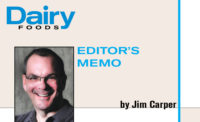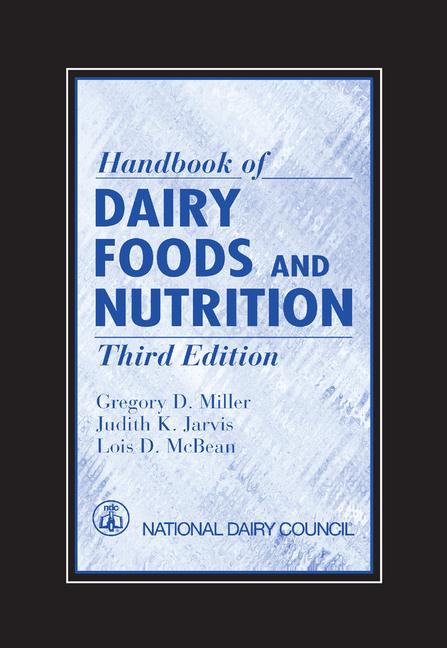The FDA proposes an extension for Nutrition Facts label changes
Dairy processors could use the new Nutrition Facts panel to highlight dairy’s nutrient powerhouse.

Are you rushing to update your label before the July 26, 2018, deadline? Here’s the good news: FDA recently proposed extending the compliance date for using the new Nutrition Facts panels.
For manufacturers with $10 million or more in annual food sales, the new deadline would be Jan. 1, 2020. For companies with less than $10 million in sales, the date would be Jan. 1, 2021.
Dairy manufacturers could use this additional time to optimize their label to take advantage of the new regulations.
Dairy’s nutrient powerhouse
According to the “2015-2020 Dietary Guidelines for America,” an estimated 80% of Americans age 9 and up do not consume the recommended three servings of dairy per day.
“The dairy group contributes many nutrients, including calcium, phosphorus, vitamin A, vitamin D (in products fortified with vitamin D), riboflavin, vitamin B12, protein, potassium, zinc, choline, magnesium, and selenium,” the report states.
But most dairy products list only the mandatory nutrients (vitamins A and C, calcium and iron under the old regulations), and few have shifted to the new Nutrition Facts format.
Vitamin D: The new regulations change vitamin D from a voluntary to a mandatory nutrient. Fortified foods provide most of the vitamin D in the American diet. Almost all milk sold in the United States is fortified with vitamin D, but many yogurts don’t take advantage of voluntary fortification.
Vitamin D and whole milk can be a winning combination, as shown in a recent study of Canadian school children. Drinking whole milk was related to both higher vitamin D concentrations and lower body mass index compared to those who drank 1% milk. The study’s author hypothesized that vitamin D, which is a fat-soluble vitamin, might be better absorbed from higher-fat milk.
Companies should consider fortifying eligible products with Vitamin D if they are not currently doing so.
Choline: The new Nutrition Facts regulations establish, for the first time, a reference daily intake (RDI) for choline: 550 milligrams per day. Research shows that roughly 90% of Americans are not getting enough choline every day.
Choline requirements are particularly high during pregnancy, as the developing fetus needs choline to form new cells both in the brain and throughout the body. Both toddler milks and beverages for pregnant women are excellent targets for choline fortification.
USDA data show that choline content in fluid milk ranges from 35 grams to 43 grams per cup.
“Since dairy producers do not currently standardize milk for choline content, this represents an interesting opportunity for a producer to differentiate their products,” said Tom Druke, director of strategic marketing for the VitaCholine brand of New Hampton, N.Y.-based Balchem Corp.
Fortifying fluid milk to a standard content of 55 milligrams would meet the level of 10% of the daily value per one-cup serving, thus enabling producers to make “a good source of choline” claim.
Potassium: Calcium, vitamin D and potassium are all shortfall nutrients and will be mandatory on the new label, along with iron. Because of a new higher Daily Value (DV) for potassium, many dairy products will now contain 6% to 10% of the DV of this critical nutrient.
Nutrition beyond the label
Unfortunately, the Nutrition Facts panel doesn’t tell the whole story, so some benefits, including bioavailability, must be shared via other methods such as websites.
“Our probiotic strain has been shown in many studies to support digestive health, which in turn leads to overall better utilization of items consumed, including protein and even select vitamins and minerals,” said Dr. David Keller, vice president of scientific operations for Ganeden, Mayfield Heights, Ohio.
The benefits of vitamin K also could be shared. The existing labeling regulations pertain only to vitamin K1.
“Vitamin K is an essential fat-soluble vitamin crucial for blood clotting, bone metabolism, cell cycle regulation and cardiovascular health,” explained Mickey Rubin, Ph.D., vice president of nutrition research for the National Dairy Council. “There are two natural forms — phylloquinones (i.e., vitamin K1) and menaquinones (i.e., vitamin K2). Recent research showed dairy foods, especially whole milk-based, can have a significant amount of vitamin K2.”
With more consumers turning to food rather than supplements for their nutrition, the dairy industry should take full advantage of the new nutrition panel to actively communicate the abundant vitamin and mineral content of dairy. Consider adding a few voluntary nutrients to your new label.
Looking for a reprint of this article?
From high-res PDFs to custom plaques, order your copy today!










